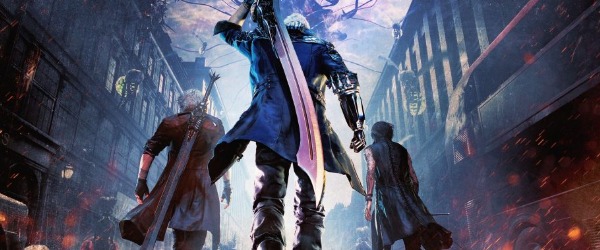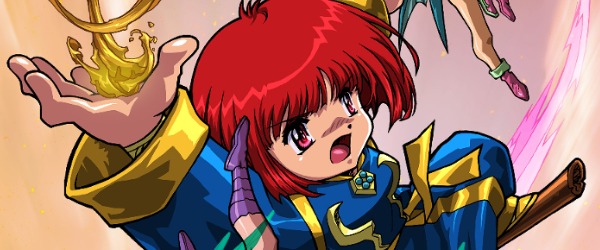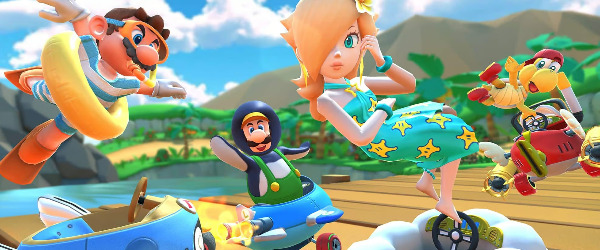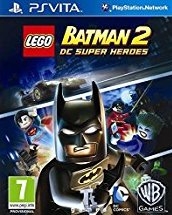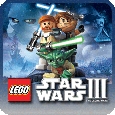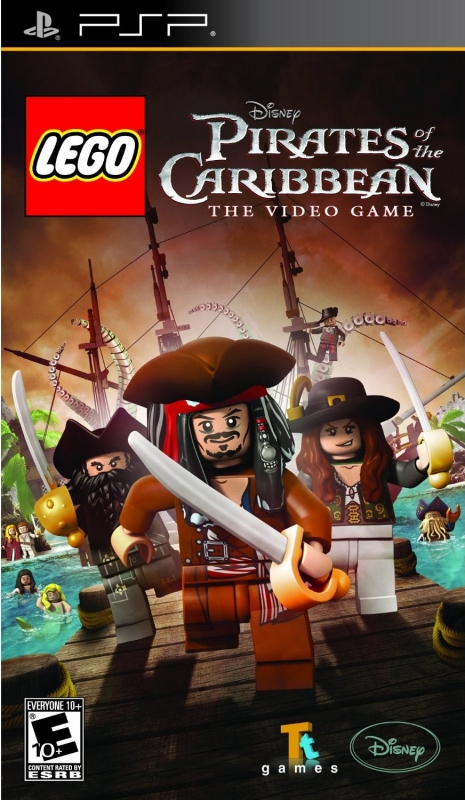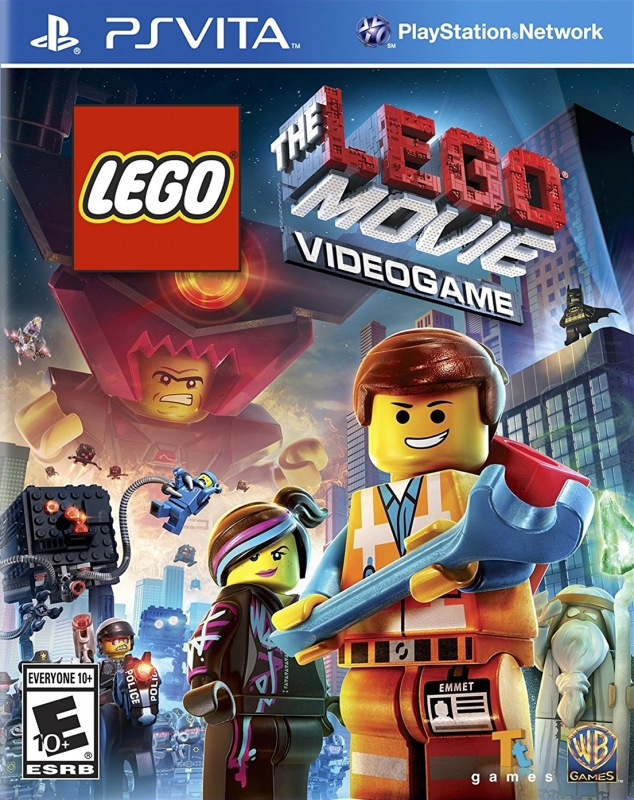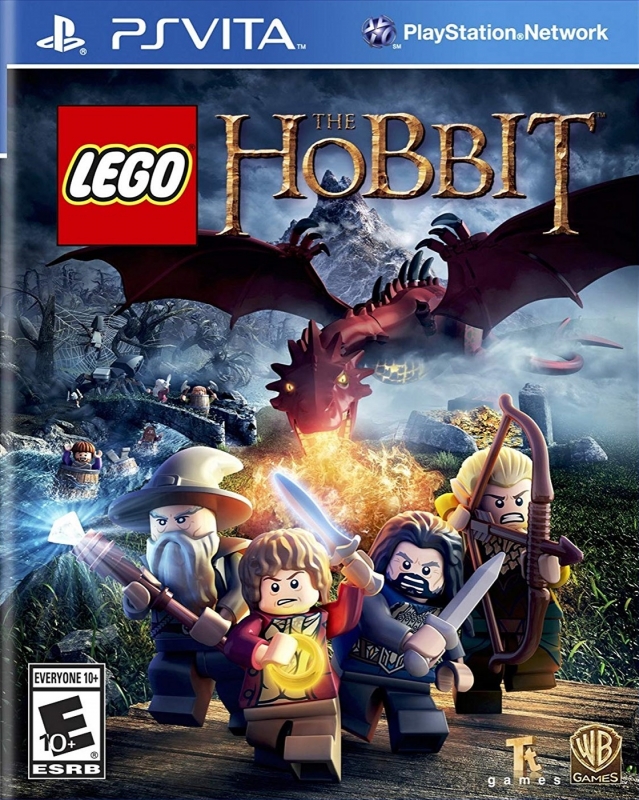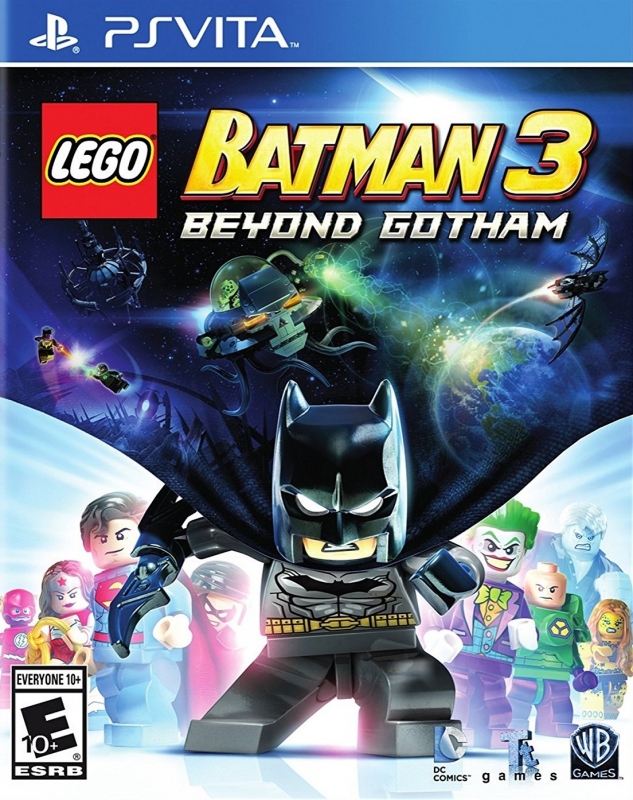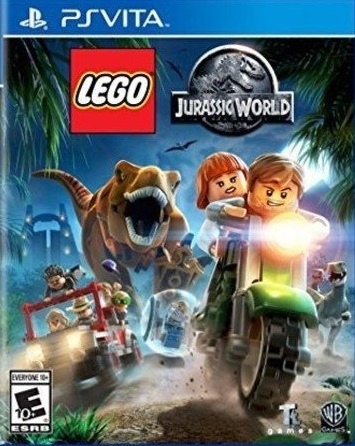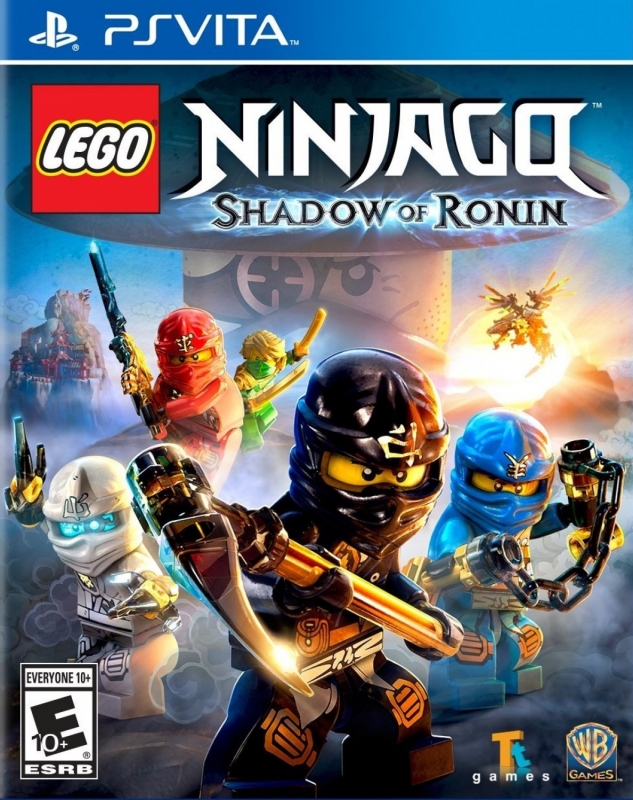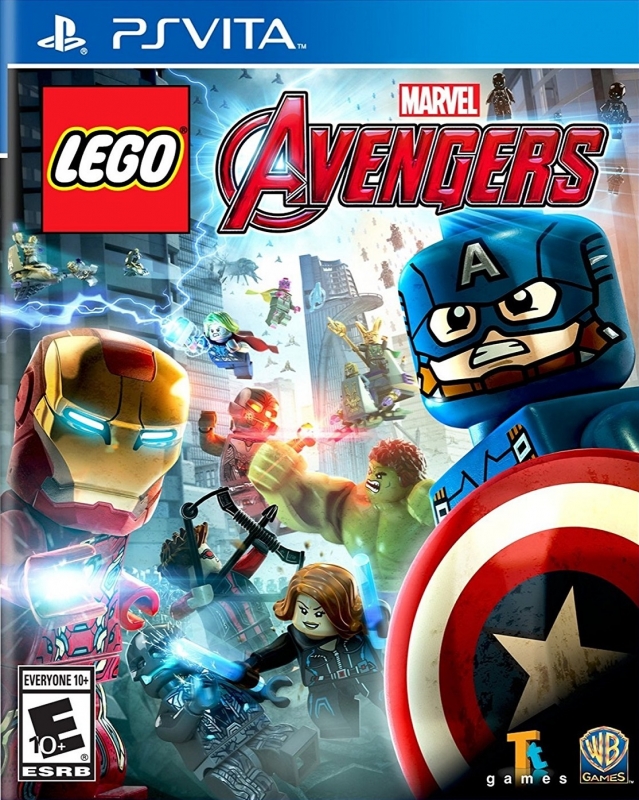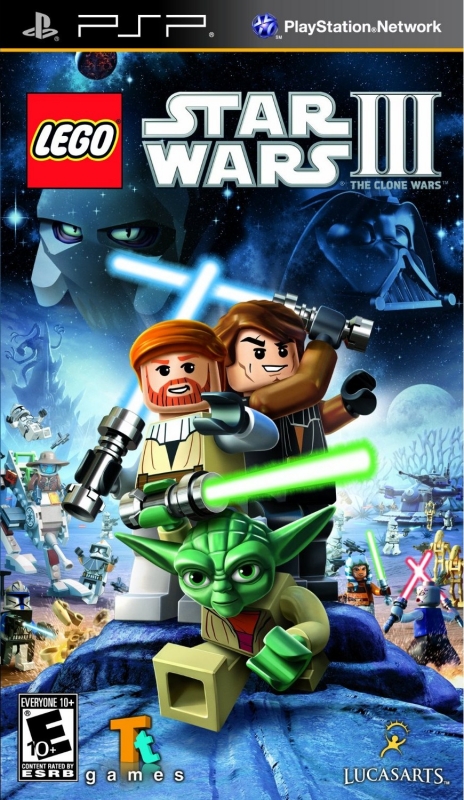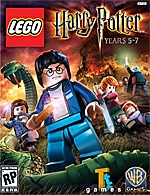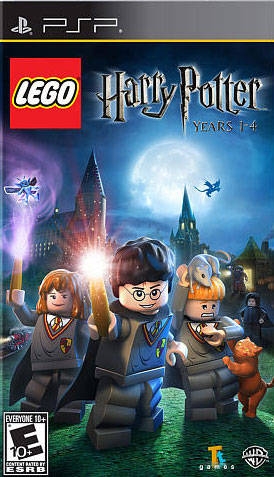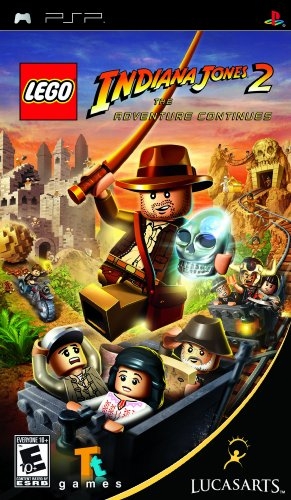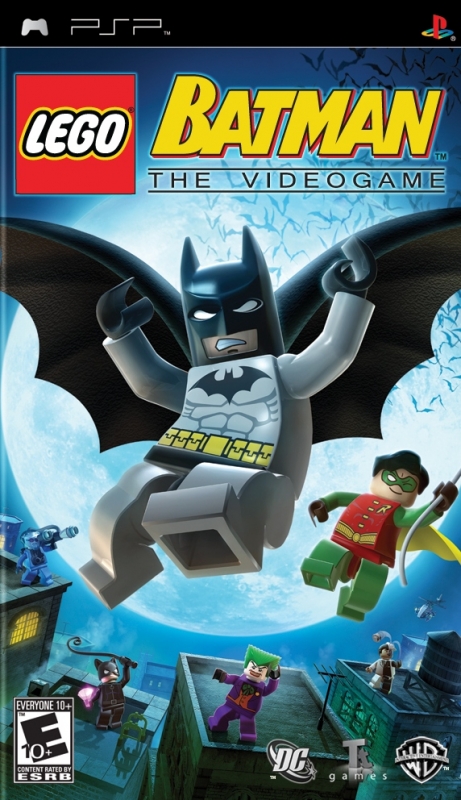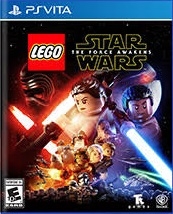
A Look Back at the LEGO Series on PlayStation Handhelds - Article
by Adam Cartwright , posted on 11 March 2018 / 8,183 ViewsIf there's one franchise that's been a consistent presence on Vita - more than any other in fact - it's the LEGO series. The first game showed up just after the console's western launch (Harry Potter) and releases continued well into 2016 (Star Wars), each bringing us a different spin on the core gameplay ideas. Ever since the appearance of LEGO Batman 2 in 2012, however, Vita fans have been left baffled - the powerhouse handheld has seemed more than capable of handling the full console versions, yet owners have often had to settle for disappointing stripped-down ports.
In this article I'll be looking back at the history of the franchise on Sony's handhelds, from its origins on the PSP right through to the latest releases on Vita (which sadly dried up after 2016), but in particular the quality of the ports on these consoles. Both handhelds have been relatively powerful for their time, but as we'll see this hasn't necessarily translated into the games taking full advantage of their capabilities.
The Birth of a Franchise and Full Console Ports on PSP

As with any good history lesson, it's best to start at the beginning. The LEGO games have existed in one form or another since the mid-90s, but it was 2005's LEGO Star Wars that served as a breakthrough for the franchise, laying the blueprint for all future games as collectathon platformers with light puzzle elements that adapt part of a film series into a hilariously oddball retelling.
It wasn't until the game's sequel, LEGO Star Wars II in 2006, however, that the series would make its debut on Sony's line of handhelds. And what a debut it was - the game was a full port of the console release, merely with toned-down graphics and sound effects. It was ported by the team that had handled the main release and proved that the PSP was more than capable of handling the console versions of LEGO games. It's actually well worth checking out even today, as it's a very enjoyable game, but sadly it's one of the few titles in the series that is currently unavailable on PSN.

This period of home-console-version porting continued on PSP through 2008, with the arrival of LEGO Indiana Jones and LEGO Batman. Both offered a large amount of content alongside decent presentation. While perhaps not the most ambitious handheld games released at the time, it was still an impressive feat having the full console experience on the go, especially compared to the rather watered-down DS versions that were releasing simultaneously. Similarly, it was nice to see the series tackle new IPs, and the LEGO Batman series would become a staple for the developers to iterate on going forwards.
Change of Developer and DS Ports on PSP

As with any good thing, eventually this run of excellent ports had to come to an end, and that began with LEGO Indiana Jones 2 on the PSP. While Traveller's Tales (the company behind all of the console LEGO games) had been porting each title with care to PSP, its sister studio TT Fusion had been making bespoke titles for the Nintendo DS, due to its lack of power. For whatever reason, in 2009 Traveller's Tales decided that the PSP versions should now be ports of the DS games, rather than the home console games, and TT Fusion were handed the reigns for all handheld LEGO titles.
Starting with LEGO Indiana Jones 2 and running through LEGO Harry Potter Years 1-4, LEGO Star Wars III, and LEGO Pirates of the Caribbean, the PSP releases were now DS up-ports.

These games weren't necessarily bad - they were still fun to play and retained much of the collectathon fun of the series. But unfortunately they lacked a lot of the features of the main versions and were notably graphically inferior due to the platform they originated from lacking power compared to the PSP. There was still fun to be had with them, but it was a sad miss-use of the console's strengths and a massive shame to see after the brilliance of the first few titles on the handheld.
First Vita LEGO title but no Shift in Direction

So with the release of the much more powerful Vita in 2012 and the announcement that the series would continue its now-long tradition of arriving on Sony's platforms, we could expect a return to home-console quality LEGO ports on the go, right? Things didn't get off to a great start, as LEGO Harry Potter Years 5-7 landed a couple of weeks after the console's launch and was merely an up-port of the PSP release (which itself was an up-port of the DS version), and a particularly disappointing one at that, often looking like a blurry mess on the Vita's screen.
However, with the imminent release of LEGO Batman 2 there was a glimmer of hope - there was no PSP version this time and some sites were reporting that the free-roaming open world had made its way into the Vita version. Sadly, early reports confirmed what many fans had feared - the game was yet another DS port. Again, while still a fun game in its own right, it was missing features like the much-anticipated open-world and included compressed graphics and audio, making it a bit of a let-down.

The next two titles in the series - LEGO Lord of the Rings and LEGO Legend of Chima - suffered from exactly the same fate and it became clear at this point that DS porting was here to stay, especially with the Vita struggling in the west and Nintendo's handheld reigning supreme in sales.
Continued DS Porting and Isometric Viewpoint

By October 2013 it was time for the next LEGO title to appear on Vita, in the form of LEGO Marvel Superheroes: Universe in Peril, which TT Fusion promised to be a bespoke experience for handhelds that was entirely different to the console releases. Alongside the red-hot IP attached to it at the time, it was easy to wonder whether this was finally the handheld LEGO game people had been waiting for.
In fact, it turned out to be an even more pared-back version than usual (yet again designed for DS first and foremost). An isometric viewpoint was chosen and levels were designed to be played in super-short chunks (in fact, a timer in levels to get bonuses actively discouraged exploration). Also missing were hub worlds (the console release actually had a fully open-world city to explore), as well as the ability of many characters to jump, taking away most of the platforming challenges. Although the game was somewhat fun in its own right and still retained the core ideas of the franchise, it represented yet another missed opportunity to take advantage of the Vita's hardware.

The isometric viewpoint and further watered-down mechanics continued in 2014 with the next two licenced properties (LEGO Movie and LEGO The Hobbit), as well as a second original game (LEGO Ninjago Nindroids). Particularly disappointing was the fact that the developers used an isometric camera for the LEGO Movie game - an IP which seemed to make a fantastic transition for the console release and looked gorgeous on PS3 and 360. Equally frustrating was that LEGO The Hobbit's open-world version of Middle-Earth was completely absent on handhelds.
Beginnings of a New LEGO Era

By the end of 2014, however, something pretty exciting happened - with the release of LEGO Batman 3, not only was the DS version finally dropped (this had actually happened with the prior release of LEGO The Hobbit, although gameplay styles hadn't shifted), but the series returned to its roots as an exploration-based, platform/puzzler with hub worlds. Although the title missed some content from the console releases (and sadly removed the exploration sections of the Lantern worlds), it marked a stark increase in quality for the franchise and was an all-round solid game.
It was easy to wonder whether this was simply a fluke, but TT Fusion went on to impress again in June 2015 with LEGO Jurassic World. A combination of all 4 Jurassic Park films, the title proved a further improvement over Batman 3 and managed to retain much of the content from the console release, chopping out only a few bits and pieces. It was followed by LEGO Ninjago Shadow of Ronin, notable for its big free-roam island hub-world which took steps to push the Vita further than any previous LEGO game had done. It seemed like - for once - these games were being developed for Vita first and ported down to 3DS later.

The ultimate confirmation of this seemed to finally come at the start of 2016 with LEGO Marvel's Avengers. As TT Fusion's game director documented, the biggest development goal for this title was to finally bring the open-world environment of Manhattan to handhelds, which arguably brought the console and handheld releases the closest they'd been since 2008's LEGO Batman. While concessions had to be made - there's a lot of fog in the hub to reduce draw-distance and content from the extra films (Captain America/Iron Man/Thor) had to be cut - it's an impressive feat and a testament to the team at TT Fusion to be able to take on the feedback they'd received over multiple entries to get the handheld games back on track, creating one of my favourite games on the Vita in the process.
Future of LEGO Games on Vita

The most recent title on Vita - LEGO Star Wars The Force Awakens - returned to the winning combination of LEGO and Star Wars that won gamers over all those years ago, adding new refinements such as blaster battles in the process. It's arguably the best LEGO game on Vita to date (at least according to the sites that did review it), although it still lacks some content from the console version. But what exactly does the future hold for LEGO games on the Vita?
Well, sadly, the likelihood of any future LEGO content on either the Vita or 3DS at this point is very slim. Despite the fact that the games still regularly feature as the top selling 3DS and Vita games each week in the UK, it seems the numbers are just too small to justify future releases. After a lengthy series absence throughout early 2017 (aside from the fairly poorly-received LEGO Worlds), the latest round of licensed titles started in September with The LEGO Ninjago Movie and only released across PS4, XB1, PC, & Switch.

The most recent release, LEGO Marvel Superheroes 2, unsurprisingly showed up on those same four platforms again and it seems the franchise has finally moved on from last-gen hardware and dedicated handhelds, which is a real shame given how rapidly the games were improving. Given the lukewarm reception both Marvel and Ninjago received, though, this may have been a smart move, allowing TT Games to focus on getting the franchise back on the right track.
Conclusion
What I hope I've gotten across in this article more than anything is that, although there have been some ups and downs along the way, the majority of LEGO games on both PSP and Vita are definitely worth checking out if you're a fan of the IP they're based on (or even if you're not and just fancy a fun, easy platformer). There's been a lot of rhetoric over the years about the quality of the games and it's my belief that all of the titles from LEGO Batman 3 onwards are well worth your time due to the increased effort put in by TT Fusion.
It's a shame that the series unceremoniously dropped Vita alongside a range of other platforms at the end of 2016, especially considering the vast improvements we were seeing over previous handheld entries. Still, in spite of this there are a numbers of games already available covering a range of IPs, so you're sure to find something you like.








